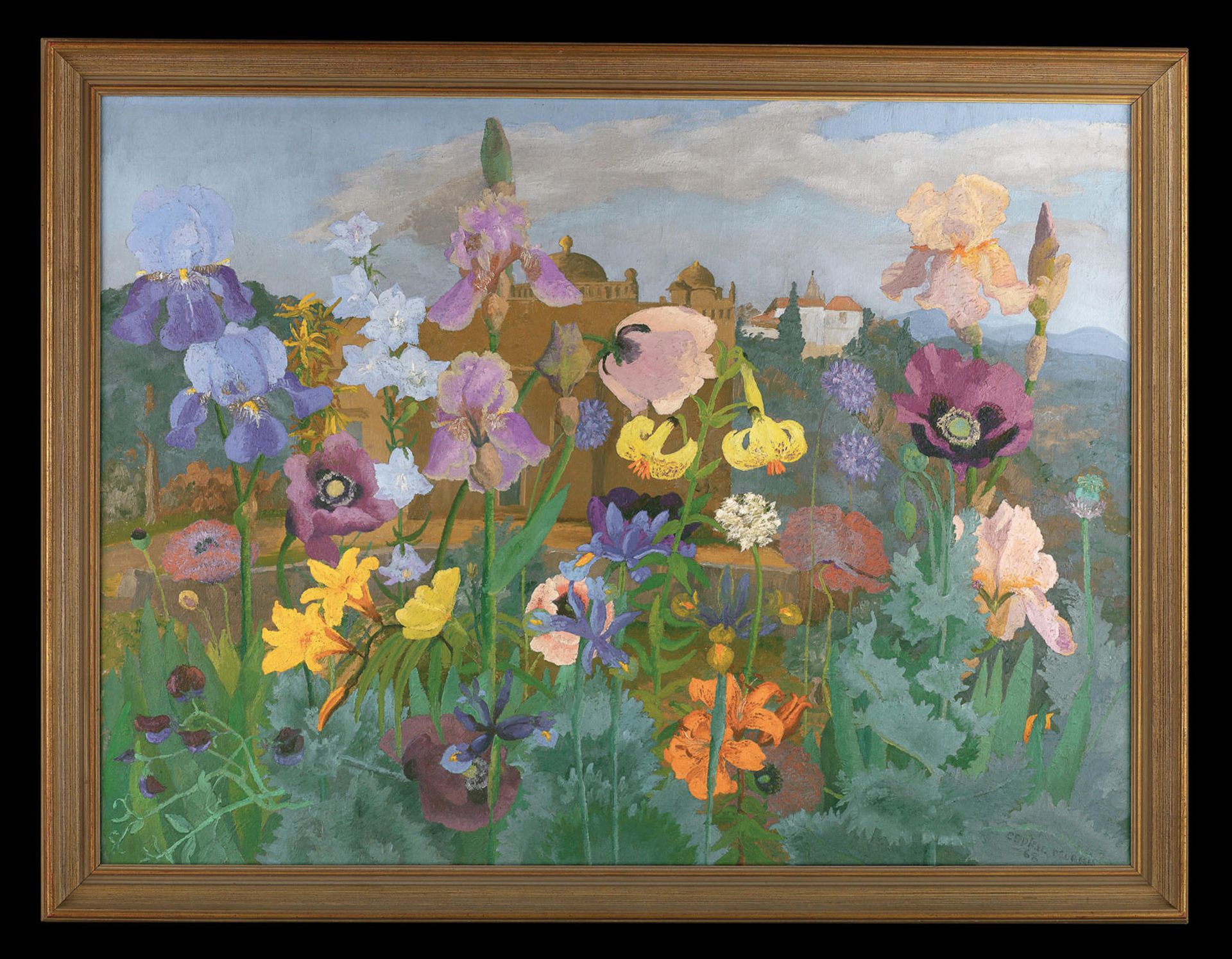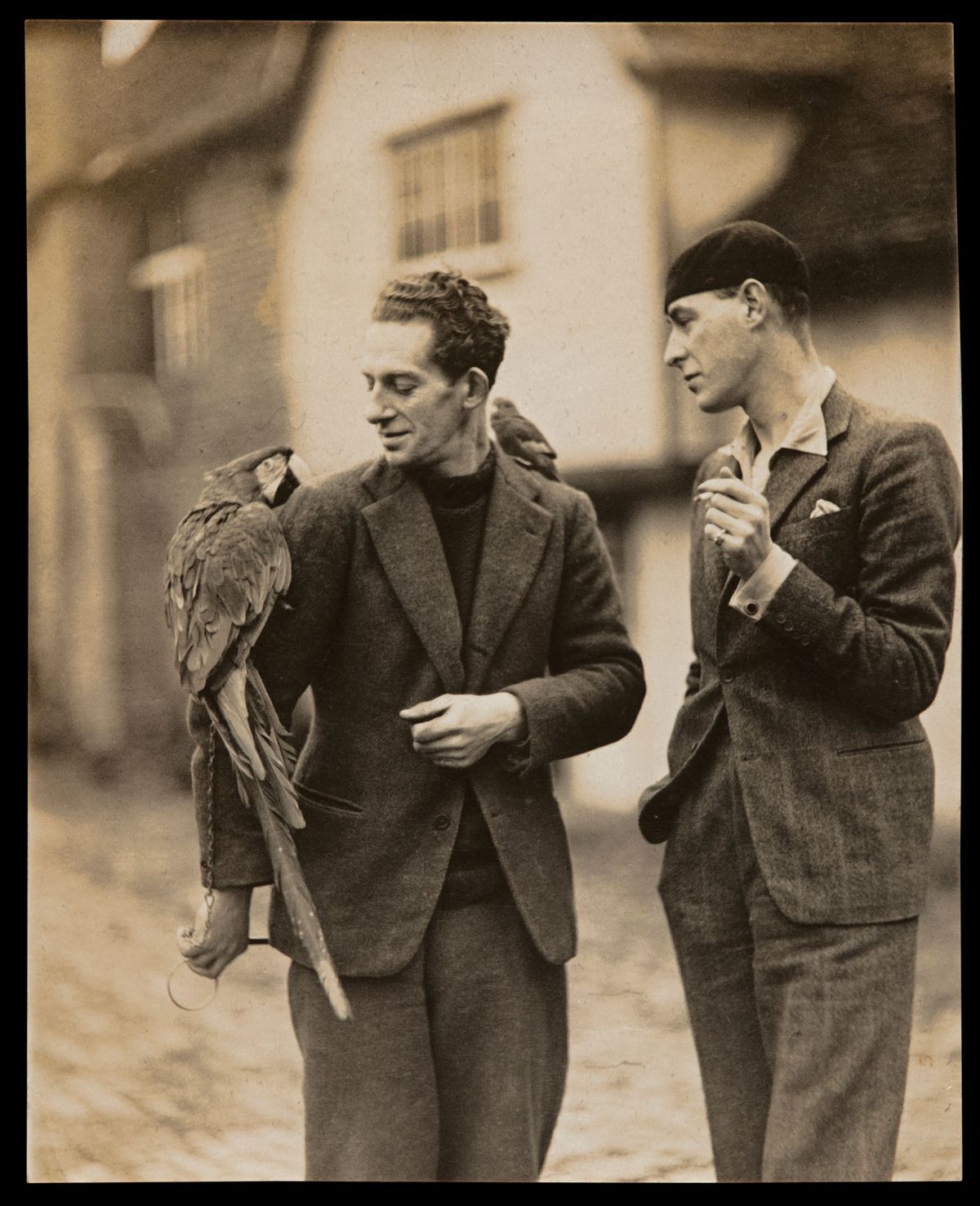It is a quirk of history that some people are remembered less for their work and more for their personality and social life, but that appears to be at least partially the case for Cedric Morris (1889-1982), a star of British painting between the First and Second World Wars but now better known as a teacher and inspirer of others (including Lucian Freud and Maggi Hambling), as well as a widely esteemed horticulturalist.
It is even more patently the case with Morris’ life partner, Arthur Lett-Haines (1894-1978), who dropped out of sight after a spell as a leading avant-gardist in the 1930s and thereafter largely devoted himself to the art school he and Morris founded in East Anglia in 1937. The pair met on Armistice Day in 1918, fell in love and commenced a long-lasting, occasionally fractious, but mutually rewarding relationship. It is also this unconventional and in some ways pioneering element to their lives that has sustained attention on the pair.

Cedric Morris's Flowers in a Portuguese Landscape (1968)
That is the backstory to a new exhibition, Revealing Nature: The Art of Cedric Morris and Lett-Haines, at Gainsborough’s House. The home of the celebrated 18th-century painter, in Sudbury, Suffolk, is close to Hadleigh, the village where Morris and Lett-Haines eventually set up their artistic community. (Their first attempt, in the Essex village of Dedham, was burned down in 1939, possibly as the result of a careless cigarette belonging to a teenage Freud.) The exhibition curator Pat Hardy says that getting across the creative elements of their lives is part of the show’s main motivation. “It’s the artistic relationship between the two of them: the influence of Surrealism on Lett-Haines, the sheer quantity of works that Morris produced, spanning portraits, landscapes, flower paintings, still lives. It just gives a very rich narrative to the exhibition.”
Morris’s work is much the better known, pitched almost midway between a faux-naïf St Ives formalism—that once got him described as the “Cézanne of Newlyn”—and a romantic small-c conservatism that revolved around his love of the natural world. His reputation will not take much reviving.

Arthur Lett-Haines’s Witch Fetish (portrait of Maggi Hambling) (1962)
© Estate of Arthur Lett-Haines
Hardy says it is Lett-Haines, who virtually stopped making art between the mid-1930s and mid-1950s, who could benefit more from the spotlight. “He imbibed the whole intellectual ethos in the 20s and early 30s, left it, but then re-inspired himself in his 60s, producing these wonderful works that are imaginative journeys through dream-like worlds, often with a sense of menace, but very much drawing on organic forms whether they’re human or animal or plant.”
For Hardy, it is a chance for the pair to step out from behind the story. “A lot’s been said about their school and their relationship in recent years; we want to focus on the art itself, and let Morris and Lett-Haines speak for themselves.”
• Revealing Nature: The Art of Cedric Morris and Lett-Haines, Gainsborough’s House, Sudbury, 6 July-3 November


